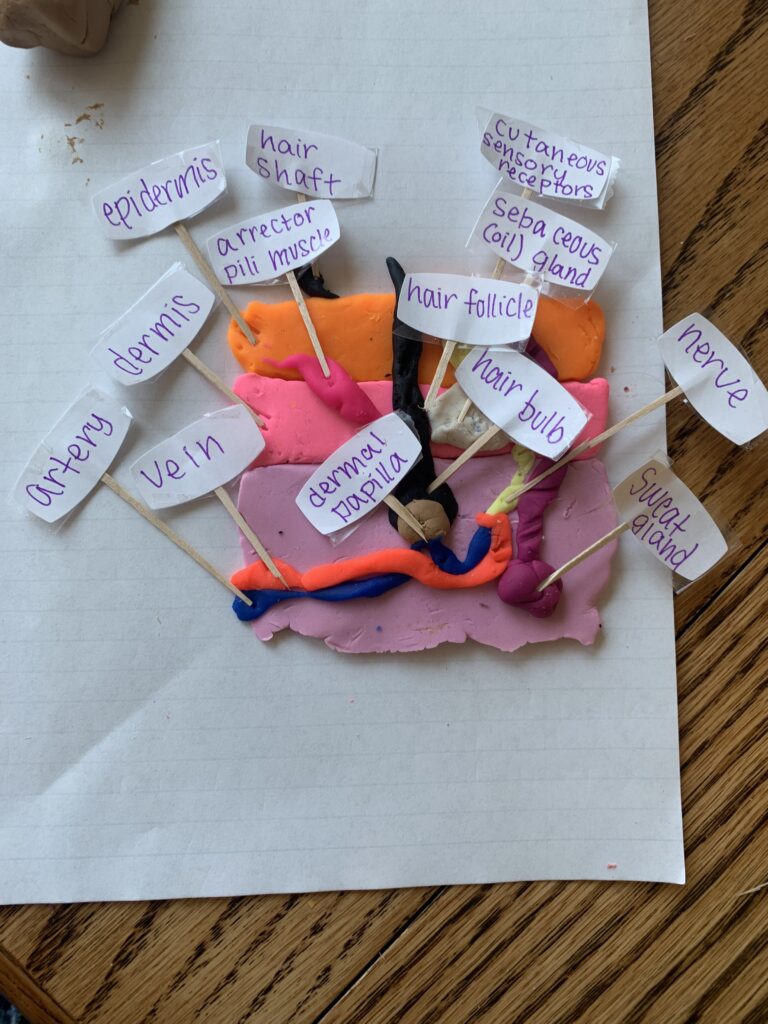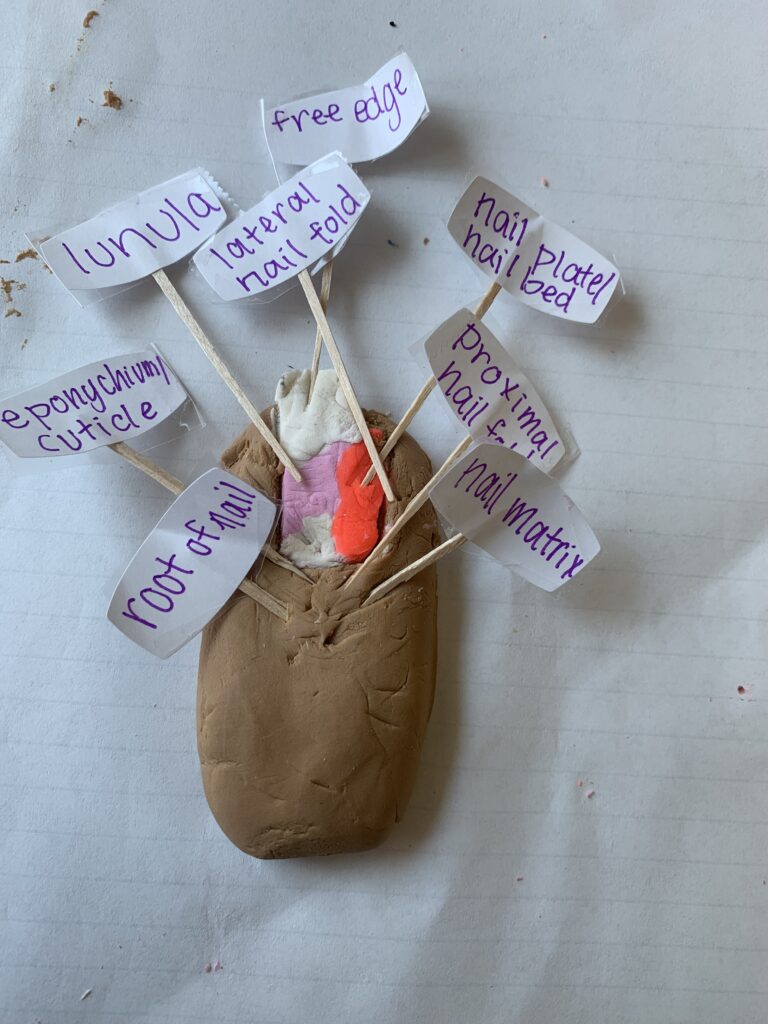The objective of my project is the 5 components of the integumentary system and their functions. I made a visual diagram of the integumentary system out of play-doh. The diagram shows the nail as a separate piece and the rest of the integumentary system as another piece, that is why there are two images. It doesn’t show how they work, but it gives a better understanding of where the components are located.



The integumentary system is the human body’s outer layer consisting of five components: the skin; hair; nails; sweat glands; and sebaceous glands. The components of the integumentary system perform many functions. The skin serves as a first line of defense and protection. It protects the body from various exposures. Our skin also aids in thermoregulation, which is the process of keeping the body temperature at a homeostatic level. One way this is accomplished is by sweating. Sweating also allows one to excrete wastes such as ammonia, uric acid, salt, and water. The skin also acts as a sensory organ It alerts us to temperature, touch, and pain, allowing a person to sense things in the environment allowing for appropriate reactions. Lastly, the skin synthesizes vitamin D. Vitamin D assists in the absorption of calcium and phosphorus, both of which are related to bone health. The skin consists of two main layers named the epidermis and dermis. The epidermis is the outermost layer and consists of epithelial tissue. The dermis lies below the epidermis and consists of primarily fibrous connective tissue. It contains blood and lymph vessels, nerves, and structures such as the hair follicles and sweat glands. There are many skin conditions that can impact both the skin and its accessory organs. The accompanying project serves as a diagram showing the various components of the integumentary system and their locations. There are two pieces to the project. One shows the structure of the skin and the other shows the structure of the nail.